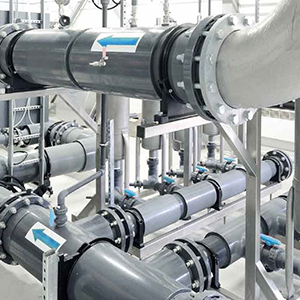SensoTech Hydrofluoric Acid

Concentration measurement in binary liquids
Sonic velocity depends on substance compressibility
and density. With a known distance (d) between
the sonic transmitter and receiver, sonic velocity (v)
can be computed simply by clocking the travel time
(t) of the sonic signal (v = d / t).
Using sonic velocity, the control unit calculates the
concentration or density of the liquid. Various other
concentration measures are also possible to gauge,
e.g. Brix, solid contents, or original gravity.
The ultrasonic meter has no moving mechanical
parts and is virtually wear-free and ageless. Typical
sensor design configures both the transmitter and
receiver within a single durable construction.
This method pinpoints liquid concentration values
optically independent of fluid color or transparency
with excellent reliability and accuracy within
±0.1 m%.
The graph below depicts the dependence of both
sonic velocity and density on the hydrofluoric acid
concentration (HF in wt%). Because sonic velocity
is quite sensitive to hydrofluoric acid concentration,
the LiquiSonic® sensor generates a clear signal,
thus measuring reliable process information continuously.
Density detection is somewhat limited with unclear
signals at HF-concentrations between 65 wt% and
80 wt%.
The LiquiSonic® analyzer installs directly within
any process vessel, tank, or pipe without a costly
bypass solution.
By virtue of a special protective ETFE coating, the
sensors work in very reactive environments, even in
hydrofluoric acid.